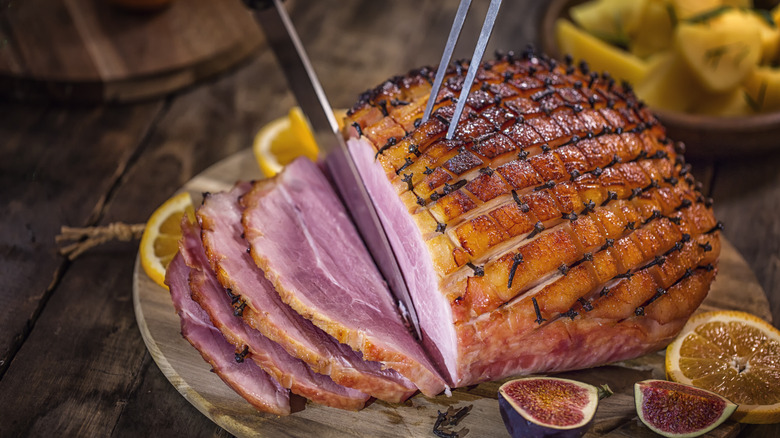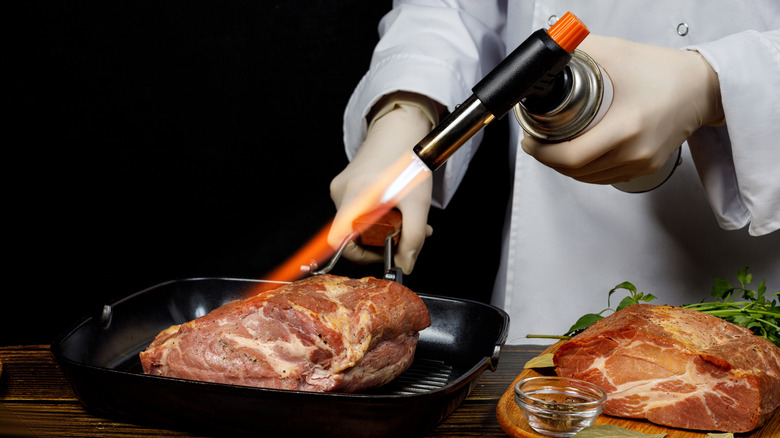Turn Up The Flavor Of Baked Ham With A Kitchen Torch
Fire. It's one of mankind's most important discoveries. Wielded by Prometheus in Greek myth, fire is a source of light and heat stolen from the Gods themselves. It is used for many purposes, both great and small, but perhaps its most essential purpose lies in the kitchen. And, beyond the usual hot spots — like the stovetop to your oven's broiler — there is another, perhaps underused, source of flame in the kitchen: the torch. Despite being primarily associated with niche dishes such as crème brulée, a kitchen torch might be the thing your next recipe is missing.
There is one dish in particular that might just benefit from a once-over with your handy kitchen torch, and that's ham. This kitchen tool can create a lovely caramelized glaze on the large cut of meat, but you won't just want to run your torch directly over your ham. You will first want to generously coat the ham in a layer of brown sugar (or the sugar of your choice). Then use your torch to caramelize it, creating a delicious glaze. This process will even help to broil the skin and fat of your ham, bringing the basic protein to a delicious and indulgent new level.
Making the most of your flame
There are a few things to keep in mind before you torch your ham. You can use multiple types of sugar for this method, from white to brown sugar, and even maple syrup or a honey glaze – essentially, any type of sugar will help in the caramelization process. Brown sugar, will give your ham a deeper, richer flavor. And, adding a layer of honey will level up your meal into the classic honey-glazed ham. You can also add fruit, such as pineapple slices to give your ham a sweeter flavor. Pineapples are a great choice when torching your ham, as this process will help to release sugar from the fruit, adding to the caramelized taste of your glaze.
However, when using a kitchen torch to caramelize sugar, you will want to be mindful of your method, as a burnt sugar glaze can turn your delicious topping into a bitter mess. To avoid this, you will want to keep your torch moving constantly over the sugar glaze so that it doesn't burn. So, next time you're looking to kick up your Sunday ham with a glaze, don't wait for the tricky and uneven browning of your oven's broiler. Take things into your own hands (literally) with a kitchen torch.

